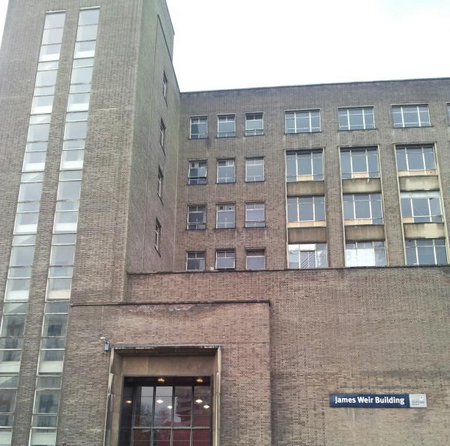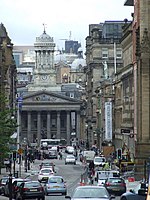James Weir Building

The James Weir Building is an academic building in Glasgow City Centre, Scotland, United Kingdom and is part of the University of Strathclyde’s John Anderson Campus, situated between the Townhead and Merchant City districts of the area. It was completed in 1958 as an extension to the Royal College Building. It is the third largest building on the John Anderson Campus in terms of overall floor area after the Royal College and the Curran Building. In addition, the stair and lift tower on the south east corner of the building is the second highest structure on the campus after the Livingstone Tower, and is highly visible throughout the eastern side of the city centre. The building is home to three faculties, The Department of Chemical and Process Engineering, The Department of Design, Manufacture & Engineering Management and The Department of Mechanical & Aerospace Engineering, all of which are part of the Faculty of Engineering. The James Weir Building is situated on Montrose Street, and is surrounded by the Royal College of Science and Technology building, the old Students' Union building and the Thomas Graham Building. It is a 5-minute walk from Queen Street railway station and George Square.
Excerpt from the Wikipedia article James Weir Building (License: CC BY-SA 3.0, Authors, Images).James Weir Building
Montrose Street, Glasgow Merchant City
Geographical coordinates (GPS) Address External links Nearby Places Show on map
Geographical coordinates (GPS)
| Latitude | Longitude |
|---|---|
| N 55.862 ° | E -4.24539 ° |
Address
James Weir Building
Montrose Street 75
G1 1XJ Glasgow, Merchant City
Scotland, United Kingdom
Open on Google Maps








